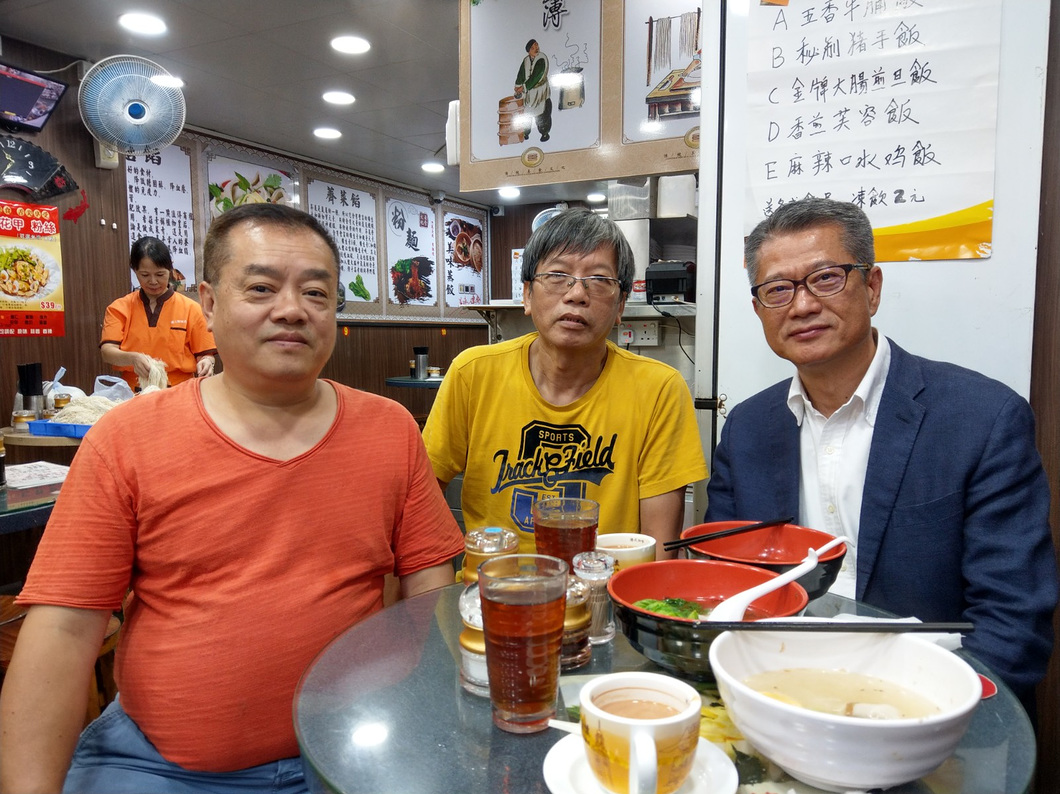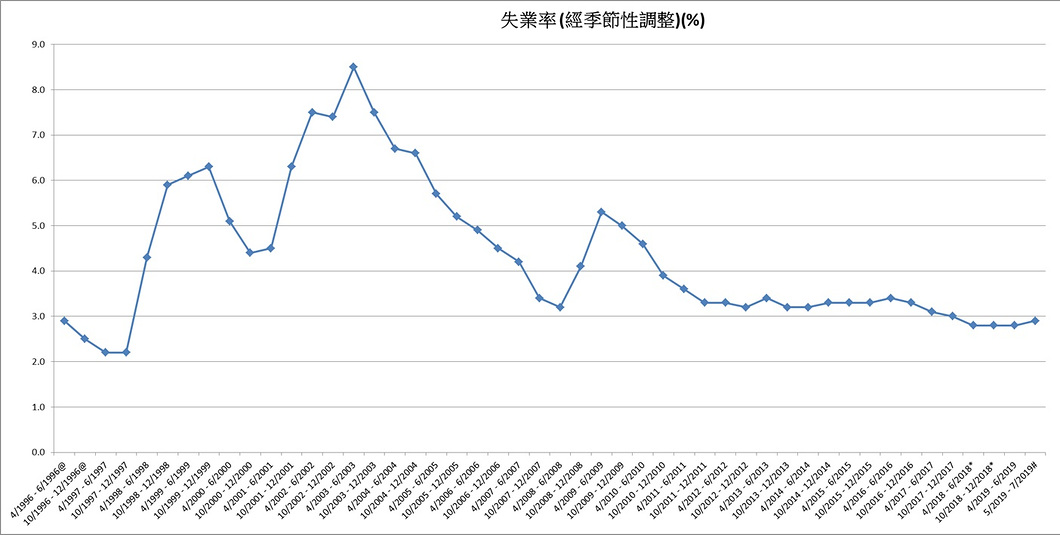Blog
Safeguarding jobs
Last week, I mentioned about how the current Hong Kong economy resembles the vigilance of a No 3 typhoon signal. In recent days, the China-US trade conflict has been escalating again, with both sides announcing an increase of tariffs. There are worries in the market about advanced economies entering economic recession, the worsening external situations and persistent violent clashes in the Hong Kong community, leading to the gradual formation of an economic typhoon that is posed to hit Hong Kong directly.
 |
In this “economic typhoon”, some sectors which are more vulnerable are already suffering. As you may have heard from the news, total visitor arrivals to Hong Kong constantly dropped by almost 50% in August. Some hotels and restaurants have requested their employees to go on unpaid leave. Surveys on the retail and catering sectors recorded double-digit fall of income in recent months. If the situation persists, it might result in layoffs of employees. In fact, in the retail, accommodation and food services sector which engage some 600 000 employees (80% of which are low-skilled positions), the overall unemployment rate has increased gradually from a low level of 3.4% at the beginning of this year (December 2018 to February 2019) to the latest figure of 4.3%, representing 27 500 employees (May 2019 to July 2019).
The seasonally-adjusted general unemployment rate of Hong Kong from May to July is 2.9%, showing a 0.1 percentage point increase from that of April to June. The number of unemployed has increased by some 4 000 in the same period, reaching 118 000. Since the unemployment rate in Hong Kong has stayed low for some time and had not increased in the past two years, the public might not feel the immediate impact of the current increase. Nevertheless, if we look back from the experience of Hong Kong dealing with financial crises in the past twenty or so years, the unemployment rate indeed could worsen much quicker than one expected. For example in the 1997-98 Asian financial crisis, the unemployment rate by the end of 1997 was only 2.2%. Over a year, it rapidly increased to 6.9% by the end of 1998. In 2000 when the dotcom bubble bursted, the unemployment rate had leapt from 4.4% by the end of 2000 to 7.5% in one-and-a-half years (in mid-2002), and further increased to 8.5% in 2003 due to the outbreak of SARS. As for the 2008 financial crisis, the unemployment rate also sharply increased in a year, from 3.2% in Q2 2008 to 5.3% in Q2 2009. Although the context, causes and development of each past financial crisis are different, we cannot take the current situation lightly.
 |
Besides, due to the completion of some major infrastructure projects, the demand for construction labour has turned weak in the last few quarters. What makes matters worse is that, since Legislative Council meetings are obstructed, a number of funding proposals for public works projects has been postponed, including 28 items already approved by the Public Works Subcommittee that are pending for the approval by the Finance Committee. These items amount to a total project cost of $74.9 billion and can provide about 14 000 jobs. Some of the affected projects, such as the redevelopment and expansion of four hospitals (Kwai Chung Hospital, Prince of Wales Hospital, North District Hospital and Princess Margaret Hospital) and the construction of Trunk Road T2 and Cha Kwo Ling Tunnel, are particularly relevant to the daily lives of Hong Kong residents.
To prevent the potentially worsening unemployment situation, I included initiatives to create jobs in the series of relief measures announced earlier. We will increase and expedite the implementation of minor works projects, for example advancing the Pier Improvement Programme. The Programme involves 10 public piers in remote areas of the New Territories and on the outlying islands. If funding approval could be obtained by the end of this year, we expect the first project will commence within this financial year. Besides, minor works under the Building Maintenance Grant Scheme for Elderly Owner-Occupiers, Operation Building Bright 2.0, Lift Modernisation Subsidy Scheme and Fire Safety Improvement Works Subsidy Scheme will also be expedited and expanded, with a view to creating more jobs for the construction industry.
To assist those adversely impacted industries, we have commissioned the Employees Retraining Board (ERB) to organise some special training programmes for the unemployed or those who are on unpaid leave, and provide special subsidies to encourage them to upgrade their skills. These skills upgrading programmes will cover over 20 sectors, including tourism, hospitality, retail, catering and imports and exports. Generic skills training courses, such as English, Putonghua and IT Applications will also be provided. ERB will announce more details later.
The adverse effects of the sustained conflicts in Hong Kong over the past two months to the economy are gradually emerging. Whether the impact will expand, widen or spread and affect the “rice-bowls” of more people depends on the goodwill of everyone. The Chief Executive is currently preparing a platform for dialogue, to sincerely discuss with people from all walks of life and to find a way out for Hong Kong. I hope that we could all “cease-fire” and let the society calm down, seek for conversations instead of conflicts, dialogues instead of disruptions. Let us safeguard our mutual hometown of Hong Kong, and avoid the jobs and lives of the common people being affected.
August 25, 2019